Reportage

It is a great pleasure to be in Dhaka once again. So a big thank you to Enayetullah Khan and Iftekhar Ahmed Chowdhury of Cosmos Foundation and ISAS for this privilege. It is also very good to meet Ambassador Gopinath Pillai again.
Twenty minutes for a prognosis of relations between India and Bangladesh is an impossible task, but being long retired from executive functions I expect this affords some degree of retrospective diplomatic immunity.
There is no country integrated more closely with India than Bangladesh in respect of language, geography, ethnicity and culture. Its location is surrounded by India save for its coastline and a border of 193 kilometers with Myanmar. The key difference is Islam, and this factor informs the relationship to a recognisable degree.
The current developments between India and Bangladesh are referred to as a golden age. Golden ages have come and gone, but there are definitely positive achievements in recent years on trade, land and rail connections, power supply, investments, lines of credit, exchange of visits, cultural and educational ties.
But I am not taking the route of a recitation, but a more panoptic and generalised approach which I think would appeal to intellectuals like Enayet, Ambassador Pillai and Iftekhar, and the distinguished guests in this audience.
Indian foreign policy towards neighbours is based on an operating principle: that neighbours keep Indian interests in mind when determining their policies. This implies Bangladesh taking no action that constitutes a threat to India, and refraining from international initiatives that enable third countries to exert influence in the sub-continent. The reciprocal understanding is that India would be generous in developmental and economic assistance, and supportive to Bangladesh's aspirations, such as to become a middle income country by 2021.
Whatever the views of Indian chauvinists, it is however wishful thinking to imagine Bangladesh as any kind of client state, or that Indian magnanimity would be sufficient to overcome Bangladesh's many problems. Whatever India is able to do, it would never be sufficient. The result of this is that Bangladesh-India ties are always underestimated.
Islam emerged as the primary national identity of Bangladesh, and post-Mujib, Islam was a mobilizing force. The schism in Bangladeshi society re-emerged with adherents of secularism and Bengali culture, and those of Islamisation and orthodoxy, ranged against each other.
From Indian foreign policy's greatest success, Bangladesh became its biggest failure. Rational thinking disappeared: Indians reacted first with surprise and then in of erstwhile friends, with indifference to bilateral problems and Bangladesh's initiatives like SAARC.
In the current period however there is greater realism on both sides of the border. India will continue to be an inevitable factor in Bangladeshi elections but next time hopefully NOT in the contrast ofIndia and Islam, or with unrealistic expectations.
Irrespective of the character of successive governments in Dhaka and New Delhi, certain inherited issues from pre-independence and even pre-partition times, will continue to challenge the formulation of foreign policy on both sides. Some of these questions are intractable and will arise repetitively and demand attention. To describe these as 'irritants' - a word in usage by both countries, is obviously a euphemism.
What are these irritants? I touch on some of these with utmost brevity.
Militancy
Given the vulnerability of its north-east which borders five nations Including Bangladesh, India comes under threat if Bangladesh became a locus of Islamist militancy. It is of importance to India that Bangladesh should be mindful of Indian strategic concern in the north and east. This is a sensitive matter for a Muslim country, even more so because official curtailment of Islamic tendencies implies some distancing from Pakistan's attitude.
Borders
An allied question is one of secure borders. It is impossible to seal a border of 4096 kilometers that is the fifth longest in the world. No wail or fence or border policing could deter would-be terrorists, migrants or smugglers. As one commentator in Bangladesh pertinently put it, you can spend crores on a fence but all it takes is the cost of a pair of pliers to make the whole project a waste of money.
On River waters
The difficulty is to find a modus vivendi between the upper and lower riparian. There is no international law that provides the answers. This is left for negotiation between the parties concerned. India is the upper riparian for Bangladesh and lower riparian for Nepal, Bhutan and China. The Ganges-Brahmaputra-Meghna mega-basin is the second largest hydraulic region in the world, and one of the most densely populated. The issue of water sharing is naturally emotive in Bangladesh, a deltaic country afflicted by floods and droughts. The Ganges/Padma agreement is a stopgap measure which does not create a community of interests in shared management and has left Bangladesh with unresolved concerns regarding upstream usages. With 53 common rivers, the Tipaimukh dam on Barak and the sharing of Teesta and Feni the whole overall issue remains contentious. Under the auspices of BIMSTEC and BBIN the question of storages in Nepal should be reopened, as well as joint negotiation with China on the Brahmaputra. Better to do this now before we face a crisis of even greater magnitude.
Concerning Trade
The present level of bilateral trade is about $9 billion, heavily in favour of India, if we take the assumed unofficial trade into account, this could be $2billion or more. But Trade logistics are poor, as well as infrastructure, and road traffic is slow and expensive. Future shipping to Pangaon near Dhaka may help, so we improve rail connections. Both countries have pursued trade liberalization in regard to tariff. The problem is not the size of the market but complementarity and competitiveness. More Indian investment in manufacture in Bangladesh to take advantage of low Indian tariffs is one answer to correcting the trade imbalance.
Regarding transit, Bangladesh's political suspicions and sentiment triumph over economic advantages. Opponents of transit argue about surrender of sovereignty, though it would lift economic growth in both countries. Transit fees would accrue to Bangladesh, and opportunities created for it to develop as the main trading hub for India's entire north-east region.
Bangladesh is trying to develop competitive advantage inextiles, being a top producer of Ready Made Garments based on low-cost labour. This advantage is transitory; without abase upstream, this major export cannot last indefinitely. Both countries should cooperate on a tariff free common supply and production chain involving Indian cotton and fiber, accessorization and joint marketing, with similar common enterprise in food products and fisheries.
Energy
The total power supplied by India is 1160MW at recipient-friendly prices. The future lies where both countries invest in dedicated plants in Bangladesh, India and perhaps other neighbours, for cower exclusively for Bangladesh. Further joint measures should include refineries, nuclear and renewable energy.
Hindus
The Hindu minority community in Bangladesh is the biggest in the world, The Enemy Properties Act is gone but sporadic violence against minorities remains. Sectarian violence in Bangladesh has repercussions in India where this issue becomes highly politicized. The number of Hindus in Bangladesh has reduced by about one half of what it was fifty years ago. Where have they gone?
The vast majority of migrants are however Muslims who enter India for economic reasons, and the pull factors of supposedly better economic, health and educational opportunities, ironic because Bangladesh has better human development indicators than India.
Bangladesh denies that there is any such movement, which is understandable; there is the question of self-respect, and there are no reliable statistics, especially as all Indian political parties have connived at legitimisation of vote banks.
There is now, perhaps for the first time ever, a world-wide concern, from the Americas to Australasia, about migration, both legal and illegal. We should note in passing that there are many thousands of Indian illegal migrants abroad, mainly in the West, causing the Indian government acute embarrassment.
Mention of the National Register of Citizens in Assam arises in connection with the migrants issue and agitates many in Bangladesh. Electoral rhetoric apart - and we will both have plenty of that in the months to come - It is my view that Bangladesh-lndia relations will be shielded from any collateral damage arising from the NRC.
About 800,000 Rohingya migrants are now in Bangladesh, and 40,000 in India. We face a similar and shared dilemma, calling for relief, identification and enumeration, which requires for close cooperation and coordination.
You will by now have grasped my underlying thesis.
In two words, Future Cooperation is key to addressing this and all other outstanding issues. There is simply no other way to resolve them.
The medium term prognosis; Constants and Variables
Both India and Bangladesh profess that they would enjoy great cordiality if only a few irritants were removed. This attitude serves a purpose though it is over-simplification.
A distinctive Bangladeshi Muslim identity has been forged in a post-colonial secular nationalist setting that can be favorably contrasted with Pakistan because of its relative tolerance, informed by attempts to preserve the richness of Bengali language and culture in a Muslim country within a context of religious influences that include Buddhist, Hindu and Sufi traditions. There is a continuous search for a Bengali identity that is distinct from India, and a Muslim one that is distinct from Pakistan; there is thus a fundamental duality of legacy and purpose.
The fact that Bangladesh can identify with adjacent India in terms of ethnicity, language, culture and shared history should make it the highest priority for Indian friendship, but ties have al! COG often become hostage to the vagaries of domestic party politics in both countries, and in the process, the fundamentals of cultural, linguistic, historical, economic and geopolitical imperatives for bilateral relations have frequently been overlooked.
In a multipolar and globalised world, a sphere of influence is on anachronistic concept, and protégés have multiple choices of partners. India should understand In a multipolar and globalised world, a sphere of influence is on anachronistic concept, and protégés have multiple choices of partners. India should understand.







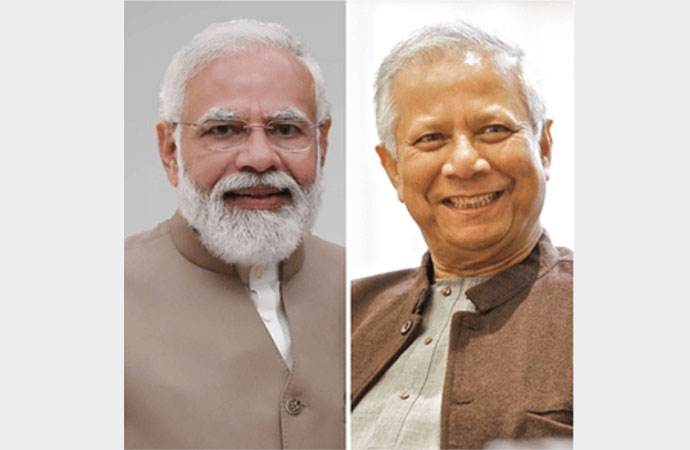
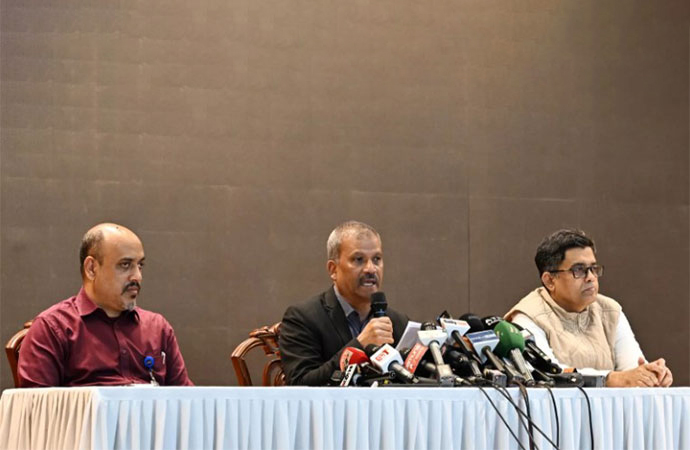



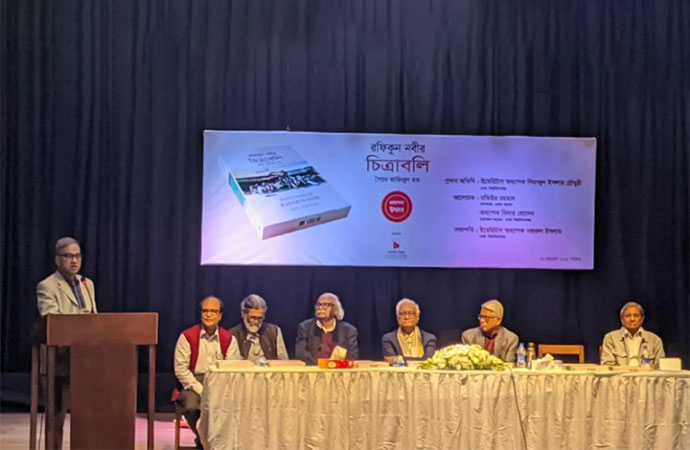









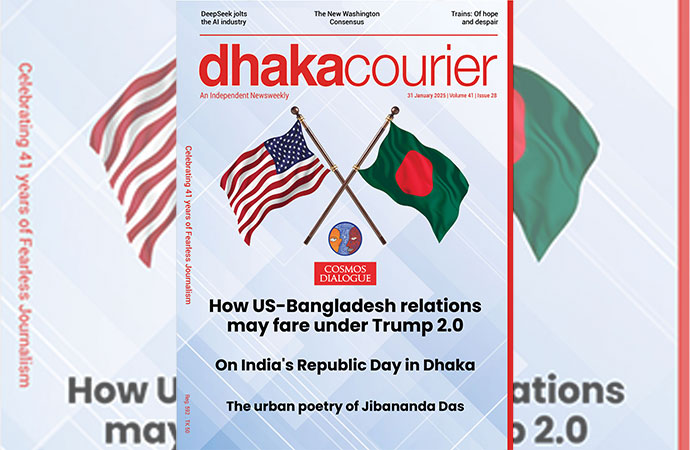
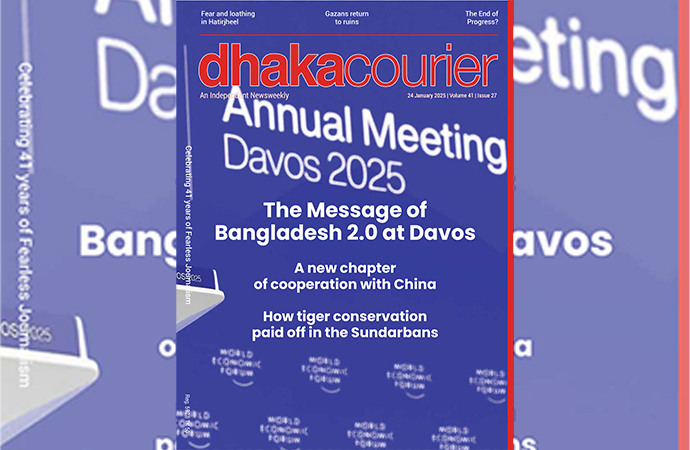
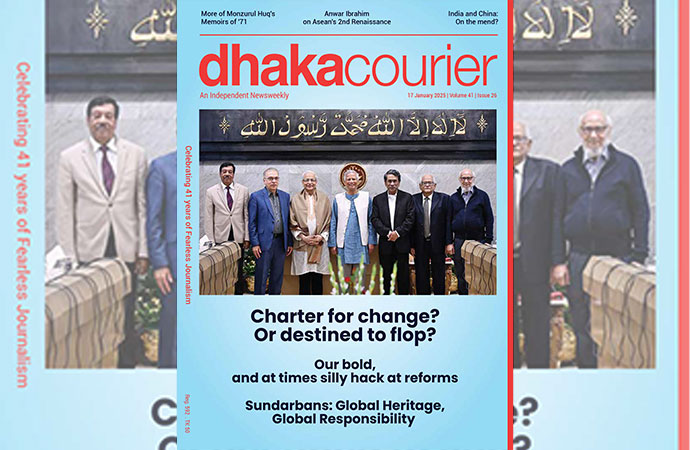
Leave a Comment
Recent Posts
Reflections on Press Freedom
Having been ensconced in the country’s media landscape in a vari ...
Rejuvenating EU ties in an era ...
Ernst B. Haas coined the theory of neo-functionalism to describe the E ...
Farmers Are Not Only Food Producers, They Are Also V ..
10-day 'Amar Ekushey Natyotsab 2025' kicks off at Su ..
How the tables were turned on Ukraine
The New Face of Protest